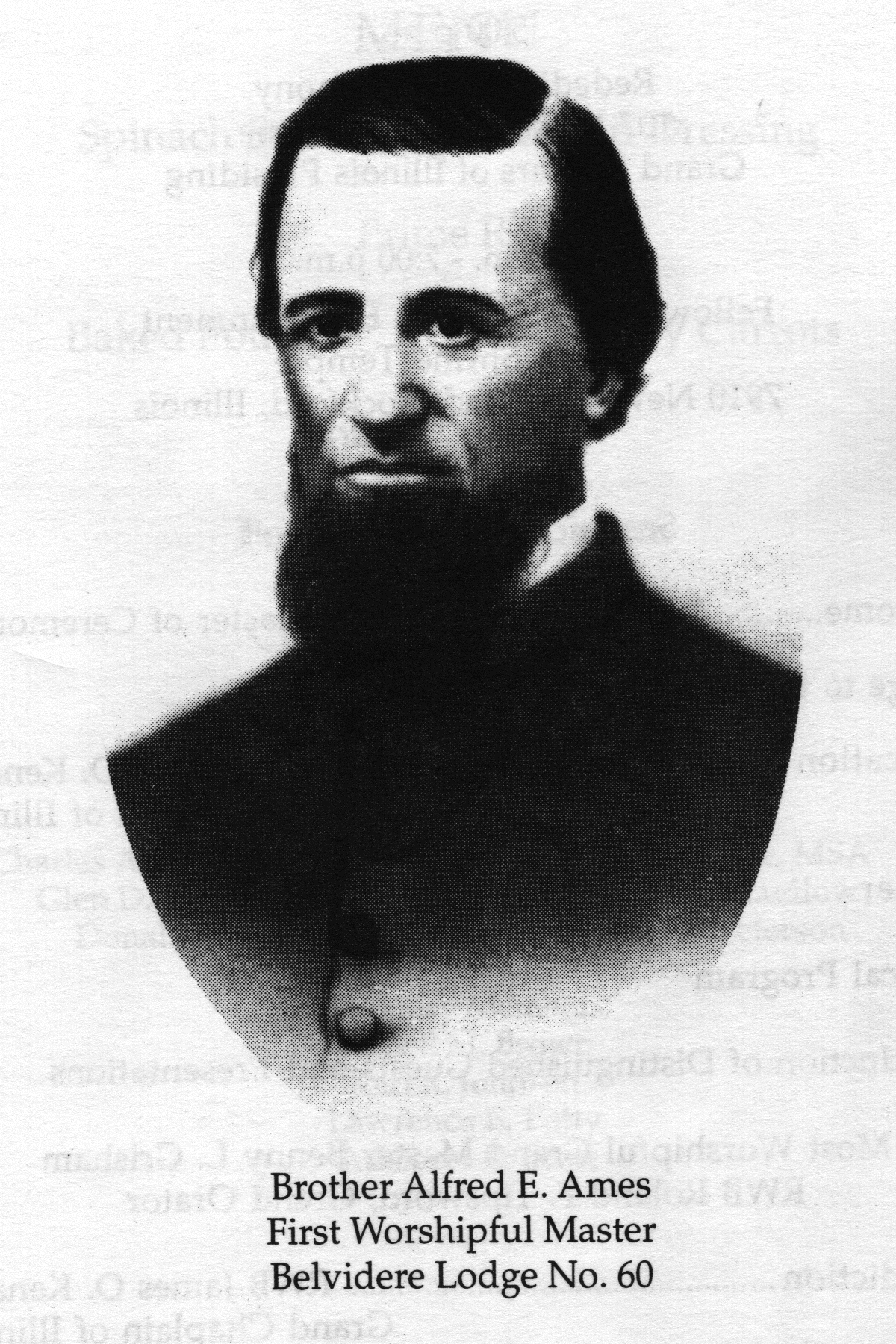

Brother Alfred E. Ames Was not only the first Worshipful Master of Belvidere Lodge in 1848 but in 1849 he participated in the formation of Rockton Lodge #74 and Roscoe Lodge #75, serving also as the first Worshipful Master of Roscoe Lodge and as one of the founders of Rockton Lodge. . A Dispensation was granted for Rockford Lodge No. 102 on February 13, 1851, by the then Grand Master, C. G. T. Taylor. Thirteen members became charter members of the new lodge. Again Brother Ames was the first Worshipful Master, he later went on to become the First Most Worshipful Grand Master of the state of Minnesota.
The following information was provided byCATARACT LODGE NO. 2 Alfred Elisha Ames, a physician, came to St. Anthony in 1851 He was a New Englander, born on a farm near Colchester, Vermont, December 13, 1814. At the age of twenty-two he moved west to Illinois where he resided for fifteen years. There he was made a Mason in Joliet Lodge U. D., of Illinois, on March 5, 1840. He founded Lodges at Belvidere, Rockton, Roscoe and Rockford, all in the jurisdiction of Illinois, and served as Master in each of these Lodges. He was a representative in the Illinois state house and was later elected to the senate. Although very successful in his private and public life, he failed in health. Hearing of the healthful, invigorating climate of Minnesota, he came here and made it his home. He was one of the best informed Masons that ever entered the Territory and became the first Grand Master of Masons in Minnesota. He was an outstanding Mason and rendered a life-long service to the Fraternity.
The same year that Ames threw his lot in with the settlers of St. Anthony, he founded the first Lodge at that place. As Masons became known to him in the village, he would take them to his office and personally examine them and investigate their good standing, so that he could vouch for them. There were eight, himself making nine in all, and on December 13, 1851, they met in his office and petitioned the Grand Master of Illinois for a dispensation to form Cataract Lodge. It was only natural that Ames would go to Illinois for his authority, he being well known to the Grand Lodge of that jurisdiction. The dispensation was granted, but only after Grand Master Thomas J. Pickett had secured a recommendation from the Master of St. Paul Lodge to assure himself that the new Lodge would in no way conflict with its work. The officers named in the dispensation were Alfred E. Ames, Worshipful Master; William Smith, ...
DEATH OF DOCTOR AMES The untimely death of Dr. Alfred Elisha Ames, our first Grand Master, occurred September 23, 1874. On the following Sunday the Grand Lodge convened and, with the respect due a most worthy Mason, accompanied him to his last resting place, according to the custom among Masons. The funeral was attended by a large gathering of his many friends and Masons from Minneapolis and other parts of the state.
While he was active in all the Bodies of Masonry, his heart was in the Ancient Craft Blue Lodge. He was the founder and first Master of Cataract No. 2, also the founder and, later, was the Master of Hennepin No. 4 for eight years. He was one of the founders of Khurum No. 112, of Minneapolis, and was the first Master of that Lodge at the time of his death. He held the office of Grand High Priest of the Grand Chapter, Royal Arch Masons, in 1861, and M. 1. Grand Master of the Grand Council, Royal and Select Masters, in 1871 and Grand Commander of the Grand Commandery, Knights Templar, in 1867. He was also a 33º Mason, an Active Member for Minnesota of the Supreme Council of the Scottish Rite, Southern jurisdiction.
In the twenty-three years he had lived in Minnesota he was continually active in public life. He was one of the founders of the City of Minneapolis, an early representative of the territorial council, judge of probate, postmaster of Minneapolis, and for many years was a member of the state normal school board. In 1871 he and Dr. David B. Knickerbocker founded a hospital for destitute sick people which later became St. Barnabas Hospital. In 1855 he was the first president and one of the founders of the Hennepin County Medical Society. But, most of all, he was a country doctor in the pioneer days who worked alone among the sick and afflicted, without the aid of nurses or hospitals.